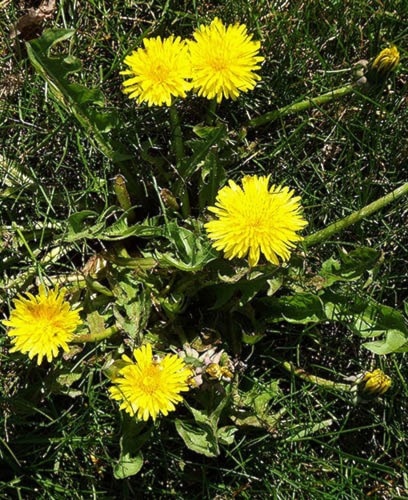It is an annual event or a rite of spring that involves my back, my trowel and that persistent yellow-flowered weed that seems to love my lawn.
Since I don’t spray any herbicides in my garden, the dandelions have assumed that they have a ‘get out of jail free card’, and as much as my daughters berate me for popping them out (they have fond memories of weaving dandelion tiaras), I usually end up with about two bushels full by the time I am done.
The irony of this exercise is that dandelions (taraxacum officinale) was actually brought to North America as a medicinal plant and pot herb by European settlers in the mid 1600s.
Taraxacum was mentioned in both Persian and Arabic herbals as early as 900-1000 AD as cure for liver ailments.
While I might agree with Ralph Waldo Emerson, who classified a weed as “a plant whose virtues have not yet been discovered,” that really can’t be said for dandelions. The foliage has the highest Vitamin A content of any leafy vegetable and they also contain almost as much iron as Spinach,The flowers are high in lecithin and the roots can be roasted and ground to create a coffee substitute – although I don’t think Starbucks has anything to worry about.
There are about 65 plants given the species name officinalis, officinale or officinarum – meaning that according to Linnaeus, they were all used as medicinal plants. A visit to the herb section of your local garden centre will familiarize you with several more of these – including Foeniculum officinale (fennel, now called F. vulgare), marjorana officinale (Marjoram, now called origanum majorana), Salvia officinalis (culinary sage), Melissa officinalis (lemon balm), levisticum officinale (lovage) and rosmarinus officinalis (Rosemary).
In fact, even Harry Potter got into the act by giving one of the more obscure officinalis plants some degree of notoriety, that being the mandrake (mandragora officinarum). The parsnip-like roots are said to take on the form of male and female figures that apparently scream as they are being pulled out of the ground, causing the harvester to go insane. Actual ly, it is a hallucinogen used in magic (wiccan) rituals, but has also been utilized in the past as a cure for headaches, muscle cramps, epilepsy and gout. So Harry must have been onto something.
There is also an aesthetically-pleasing element of medicinal plants, many of which are commonly found in modern gardens. A few of the most popular include English lavender (L. officinalis, now L. angustifolia), common Jasmine (Jasminum officinale), apothecary rose (rosa gallica var. officinalis), valerian (valeriana officinalis), European peony (paeonia officinalis) and soapwort (saponaria officinalis) – all of which are delightfully fragrant.
Of course, dandelions weren’t the only weedy species brought to North American for medicinal purposes. A few other common culprits include the mouse-ear hawkweed (pilosella officinarum, now called Hieracium pilosella), comfrey (symphytum officinale) and common speedwell (Veronica officinalis).
So for all you taraxacum pluckers out there, I am going to leave you with a traditional French recipe for dandelion salad so you can at least enjoy a bit your labor by means of eating your enemies.
• Mix 3-4 cups of freshly washed dandelion leaves (picked before the plant flowers) with half cup of finely chopped red onion, half cup of grape tomatoes, 1 tbsp. of finely chopped fresh basil, a dash of sea salt and black pepper, and 1 strip of bacon fried to a crisp and crumbled. Dress with quarter cup of extra virgin olive oil and two tbsp of red wine vinegar mixed.
Mike Lascelle is a local nursery manager and gardening author. (hebe_acer@hotmail.com).
